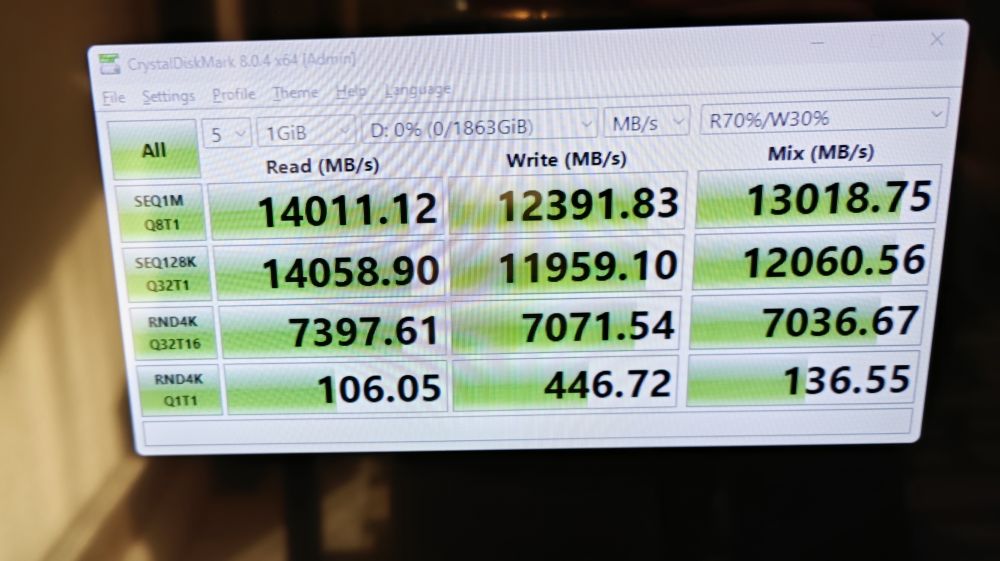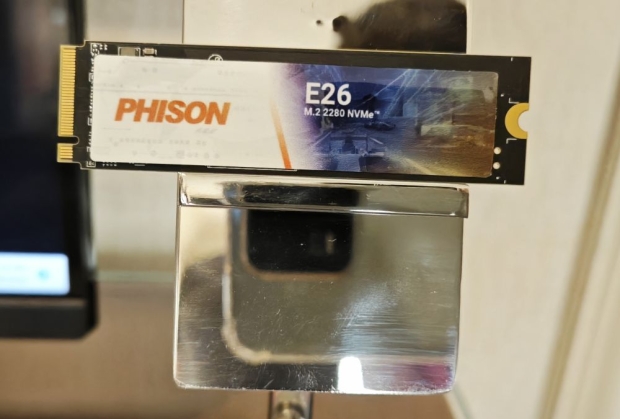Both are industry veterans who spent a lot of time benchmarking drivers before they moved to the industry. Chris was showing us a Phison E26-based drive scoring 14011.12 MB/s read and 12391MB/s write passively cooled.
My immediate reaction after hearing that companies like Sabrent manage to get performance even close to 14000 MB/s was that one needs an active fan for this drive, but Chris assures us that this is not the case.
The E26 and newly launched E31 mainstream PCIe 5.0 drives will need passive cooling, and the standard motherboard heatsink should suffice as long as you have any airflow in the case. The E31 will launch in Q1 and offer 10.1GB/s read and write, and with the future NAND, one can expect 14GB+ speeds.
What happened with early PCIe 5.0 reviews was that our colleagues were testing on the desk workbench without any airflow, and such a scenario can result in throttling and overheating of the M2 PCIe 5.0 drive. As long as there is a normal intake and exhaust airflow breeze through the case, one should be fine.
We have seen the drive in action working fine under the motherboard heatsink of the Gigabyte Aorus board in the CES 2024, and the drive was running at an acceptable 39 Celsius.
William from Sabrent also showed us the first samples of the Sabrent PCIe 5 Rocket 5 shipping in Q1 2024.




